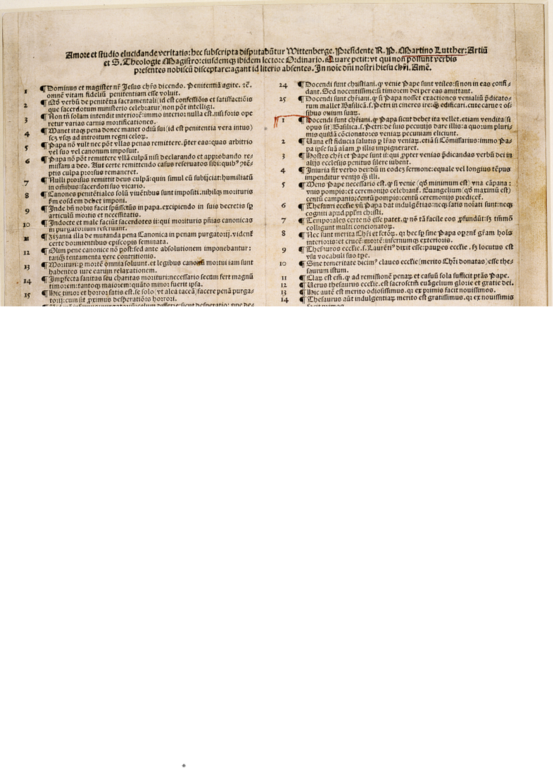
Your word is a lamp to my feet and a light for my path (Psalm 119:105).
October 31 is Reformation Day.
It was on that date in 1517 that Martin
Luther, an Augustinian monk and university professor, nailed his 95 Theses (a
list of disputations with the Roman Catholic Church) to the wooden door of the
Castle Church in Wittenburg, Germany.
The RC Church – in Luther’s day and in ours – has held to dual sources of authority: 2 primary methods in which Almighty God conveys His will and instruction to the human race. Those 2 ways to govern faith and practice are:
1)
the Scripture and
2)
the Tradition of the Church.
However, two 21st century popes (John Paul II and Benedict) have declared the Roman Church is not a “religion of the book.”
Therefore, in addition to Scripture – and sometimes appearing to hold greater authority – are those practices that make up Tradition: papal encyclicals, findings of authorized
Church councils, liturgical worship, catechesis, etc.
Looked at from a slightly different vantage point, the Church’s superior power was required to authorize the
Scripture.
Five centuries ago, Luther and the other Reformers came to the determination that the Bible alone had God’s authority.
That’s when the true Gospel – the Gospel of the apostles – was recovered.
Their proclamation became sola scriptura
– the Bible alone was supremely mandated for understanding the
Gospel of Christ and how we are to live our lives before the face of God.
Furthermore, the Reformers came to believe that the Bible authenticates itself as God’s Word; it proves itself to be what it claims to be. Its uniqueness is self-evident because the Holy Spirit of God uses the Word of God to convince people about the Gospel of the Son of God.
Reformer John Calvin, asserted that Scripture
breathes something divine.
Sceptics have responded that such thinking about the Bible derives from a circular argument: Christians believe the Bible is God’s Word simply because it says it is the Word of God.
But in the 17th century, English
Puritan writer and Oxford University professor John Owen reflected on the
metaphor of light and its usage by the Lord Jesus and the authors of Scripture.
Light
and darkness are common biblical metaphors.
Darkness signifies ignorance, foolishness,
deception, evil and wickedness. A related image was that of spiritual
blindness.
In the Sermon on the Mount, Jesus declared, But if your eyes are bad,
your whole body will be full of darkness. If then the light within you is
darkness, how great is that darkness! (Matthew 6:23).
By
contrast, light in the Scriptures is used to characterize truth, righteousness,
justice, goodness, order, blessing and life.
And light
results from the determination to avoid spiritual darkness by loving and following
Christ.
Owen’s reflections on the Word of God took him to Psalm 119:105 Your word is a lamp to my feet and a light for my
path.
Owen observed that only what is not
light, needs light to be known. Anything in the darkness is unseen until
exposed to the light.
But, by contrast, light manifests itself.
We don’t need to shine light on
light to know or to observe what it is. Light proves itself by what it is. It
can be understood and recognized by all.
Consequently, light is self-evident and
therefore is self-authenticating. But it can only be understood or comprehended
by those with eyes with which to see.
To Owen, light is a metaphor for the Word of God in that the Bible’s light proves itself by what it is. Only by the light of Scripture can we apprehend ultimate truth.
Takeaway: Submitting to the teaching of Scripture as one is empowered by the
Holy Spirit is the place of greatest blessing.
In the words of Jesus, To the one who has ears to hear, let them
hear!
I am the light of the world. Whoever follows me will never walk in darkness, but will have the light of life (John 8:12).
graphic
- https://commons.wikimedia.org/w/index.php?curid=47482515